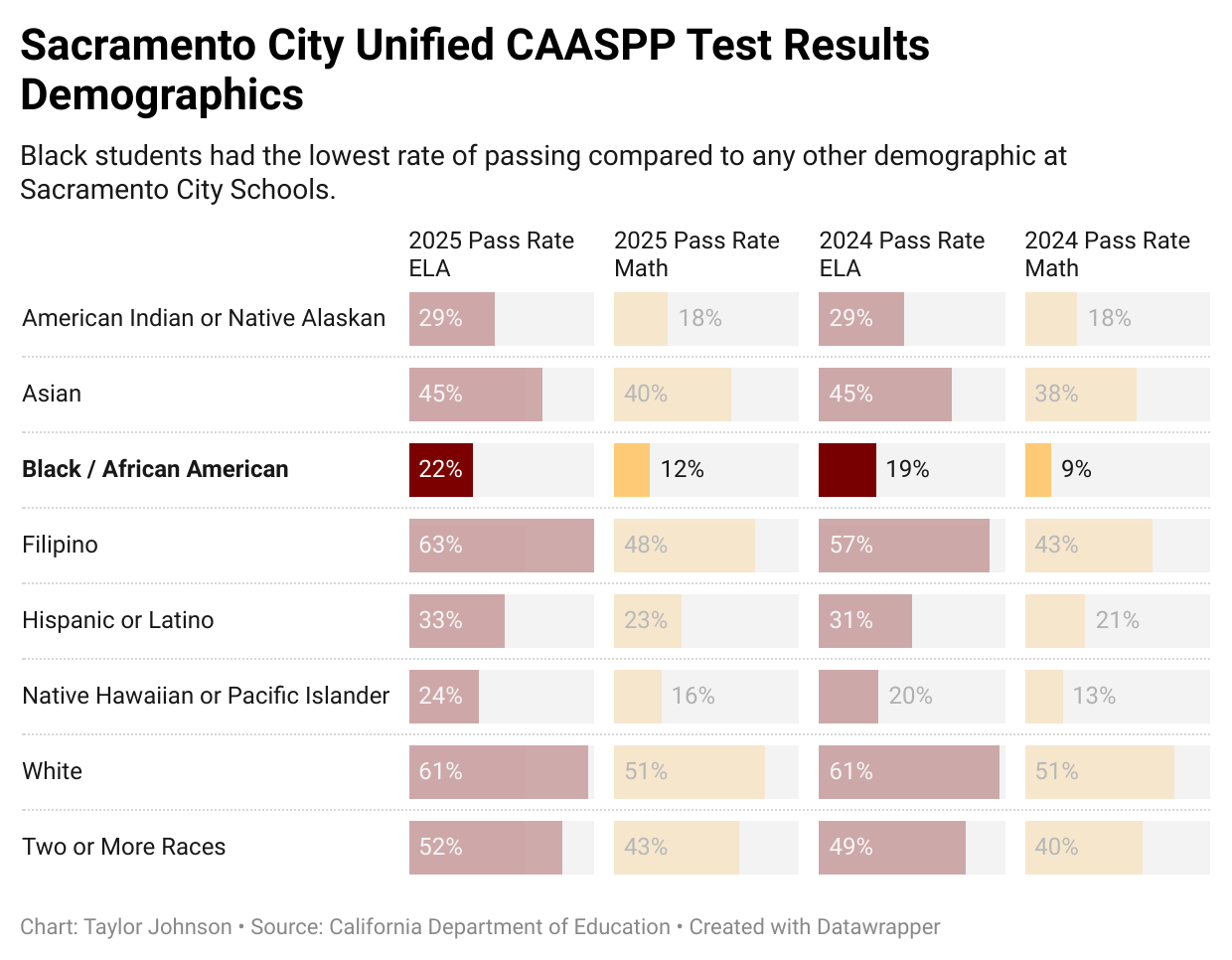Despite years of effort to close achievement gaps, Black students in Sacramento’s largest school districts still trail their peers in English and math test scores on California’s statewide exams.
The results of the California Assessment of Student Performance and Progress point to persistent inequities in Sacramento schools, where educators and advocates say Black students face systemic barriers that hinder achievement despite district efforts to close the gap.
San Juan Unified had the lowest pass rate for Black students compared to all other districts with only 19.8% passing English language arts and 9.8% passing math.
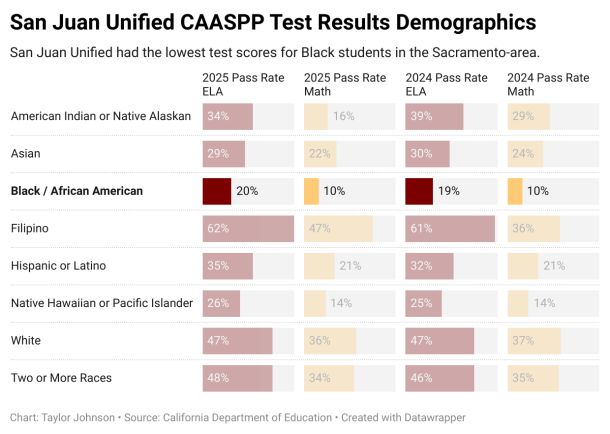
Elk Grove Unified had the highest Black students pass with 34.4% passing English language arts and 22.9% passing math, both figures slightly higher than the state’s national average for this demographic.
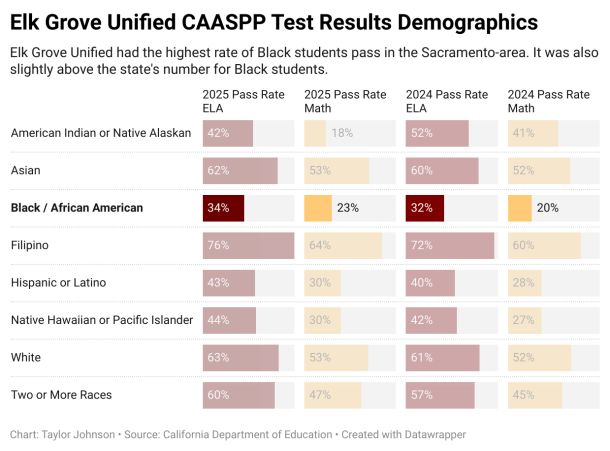
Christopher J. Nellum, executive director of EdTrust-West, said in a press release that the state’s students of color, multilingual learners and low income students deserve more than what they are receiving and that the data shows this.
“These gaps are not just persistent, they’re unacceptable,” Nellum said. “To accelerate gains for students of color and our state, we need major policy shifts, not just program tweaks. In the wake of the federal government’s retreat from education, the state’s role in supporting students is more important than ever. California has a responsibility and an opportunity to lead.”
As for other area districts, in Sacramento City Unified only 21.9% of Black students passed the English language arts test and 12.3% passed math this year. Natomas Unified had 22.4% pass English language arts and 13% pass math.
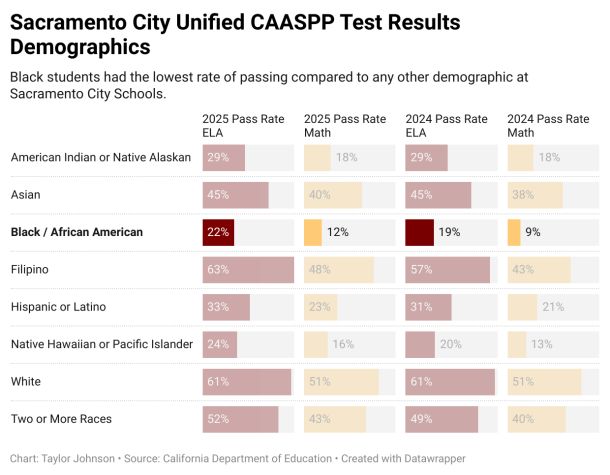
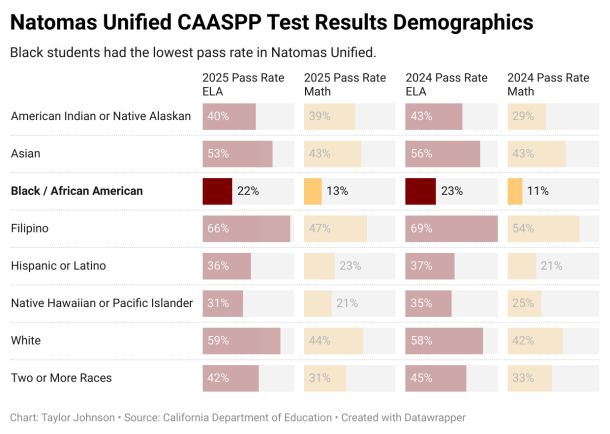
Finally, Twin Rivers Unified had 27.7% of Black students pass English language arts and 16.4% pass math.
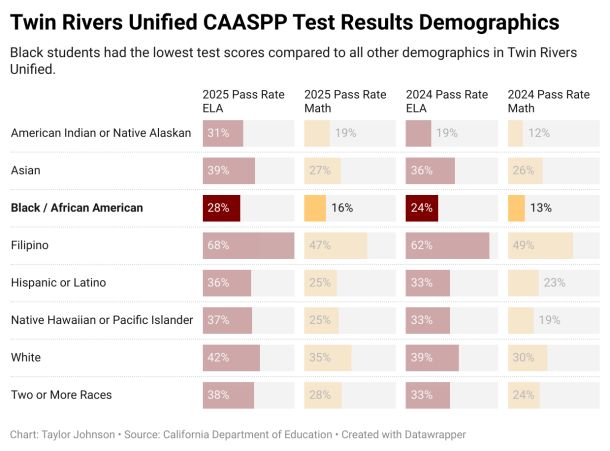
Carl Pinkston, co-founder of the Black Parallel School Board, said there were small and slow gains to close the achievement gap between Black and white students made after the COVID-19 pandemic set everyone back.
“Those numbers seem to remain about the same for a long period of time, and they’re very stubborn numbers that don’t seem to show that districts are moving much more aggressively to close the opportunity gap,” he said.
Pinkston said this year’s low scores and minimal gains could be even lower next year if nothing is done and financial resources are cut. “Yes, there are more resources in terms of social and emotional support and community schools,” he said. “All of that has helped, but my greatest fear is that next year there will not be additional resources made available, particularly from the federal government [but] also from the state. We will probably see even greater and much more disastrous numbers that will disproportionately impact Black students.”
In July, the Sacramento County Office of Education issued a report on Black students with the help of Assistant Superintendent of Educational Services Channa Pitt and her research.
The report — which also included data from prior CAASPP results, suspension rates, graduation rates, and more — found Black students across all districts continue to face systemic barriers that hinder academic success and emotional well-being.
Countywide, Black students are 10% of the student population, but they account for 28.5% of foster youth, 19.8% of homeless youth and 15.3% of students with disabilities.
The county education office is working on solutions to give other districts to formulate a plan for addressing some of these systemic issues.
“This is really sad that we’re just celebrating these small increases, but we should not become sober or sit on our laurels at this particular moment, because we need all students to learn, to graduate and be college and career ready,” Pinkston said.
Related

